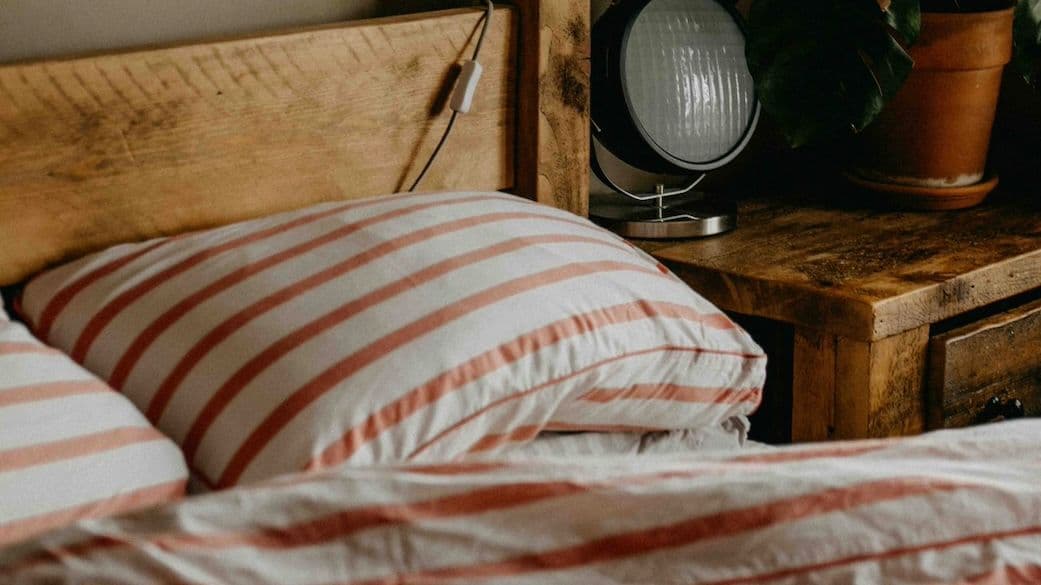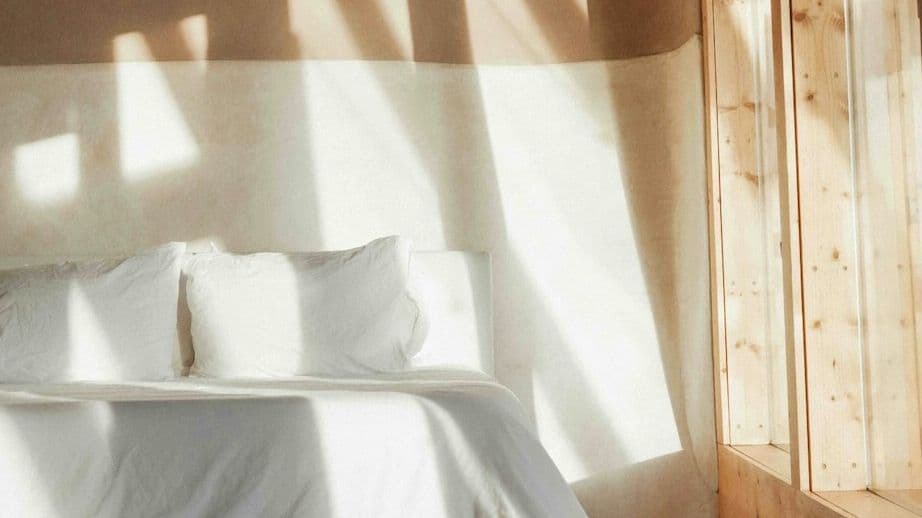
To keep your sheets crisp and fresh
How to wash your bedding?
How do I wash my bedding?
For handy tips for in and around the house, Productpine is the place to be. Because finding the answer to a household problem does not have to be done alone. We make it easy for you to solve these riddles so you can get back to business as usual. Today in the spotlight: how do I wash my bedding? There is not just one answer to that, but we are going to break it down for you into different types of bedding. After all, how do you wash your pillow or duvet? And what do you need to consider if you want to wash a flannel or keep your duvet cover looking nice for longer? You ask, we spin. And not just laundry...
On to a fresh bed with our step-by-step plan
A clean bed consists of more than just washing your duvet cover. After all, the perfect sleeping experience needs more than that. A lovely duvet to crawl under, but also the ideal pillow and a supportive mattress. For each part, we provide you with simple tips so you can quickly enjoy your fresh bed.
Washing bed linen such as duvet covers and sheets
When you enter your bedroom, it's that cute duvet cover that first catches your eye. Great that different duvet covers allow you to change the style and atmosphere in your bedroom from time to time. And then it's time to wash it again! When washing bed linen such as duvet covers and (fitted) sheets, you should always wash them at 60 degrees Celsius. This may sound hot, but a lower temperature of 40 degrees will not kill dust mites, mould and bacteria. A temperature of 40 degrees Celsius can be compared to the temperature at which you shower. Not hot enough to kill bacteria, in other words.
Duvet covers can be made of different materials. And not every material stays at its best at 60 degrees. You can find your new duvet cover in these materials:
- Cotton: wash at 60 degrees
- Linen: wash at 40 degrees, otherwise it may shrink
- Satin: wash at 40 or 60 degrees
- Flannel: wash at 60 degrees
- Cotton percale: wash at 60 degrees
- Microfibre: anti-allergenic material and therefore best washed at 60 degrees
For every duvet cover: read the label included in the cover carefully. It tells you how many degrees you can wash it at and whether it can be tumble-dried or on which setting you can iron it.
Fitted sheets are also usually washed at 60 degrees Celsius and can therefore easily be put in the washing machine with the duvet cover. Unless of course the care label inside the fitted sheet indicates otherwise. Also try to wash the same colours with each other in case of colour transfer. When it has been washed several times, you can throw it together: then it will no longer give off.
Washing different duvets
A duvet, not to be confused with the duvet cover, is the blanket you put the cover around and come in endless varieties. Think of different sizes such as a single duvet (140x200 cm), double duvets (200x200 cm) and twin duvets (240x220 cm). But above all to the different materials. Below we list the most common filling materials, useful features and the corresponding washing instructions:
- Wool: is antibacterial and therefore you don't really need to wash it. Regular shaking helps keep the woollen duvet fresh. When you wash a woollen duvet, you rinse the lanolin (wool fat) out of the wool, making it prickly.
- Synthetic: easily (and often) washable at 60 degrees. Great for when you have a house dust (mite) allergy.
- Feathers/down: not very easy to wash. Choose up to 40 degrees on a wool or special down programme if you do want to wash. Rinse the duvet to get rid of detergent.
- Bamboo: can be washed at preferably maximum 40 degrees and you can also put it in the dryer. Bamboo is plant-based and is therefore seen as a more sustainable option. However, this is not always the case. So when looking for a sustainable duvet, pay attention!
- Tencel or Lyocell: is a hypoallergenic, antibacterial material so you don't actually need to wash it. Shaking it up is often enough. If you do want to wash it, do so at a maximum of 30 degrees. Tencel/Lyocell is a natural synthetic fibre and is made from wood pulp from eucalyptus trees.
- Cotton: a cotton duvet can be washed at 60 degrees. Cotton is strong, but because it is very breathable, you need a lot of it to fill a duvet. It is therefore not the most durable choice.

You can wash your pillow too
You lie there dreaming every night, but it is also a breeding ground for bacteria and dead skin cells. So it is nice to freshen up your pillow every now and then. Just like duvets, pillows come with different fillings. Below we list these materials:
- Down pillow: gives the light-as-a-feather feeling. This pillow ventilates well and can be washed at 60 degrees on a gentle cycle. Has it become a bit flat? Then put it in the dryer with 2 tennis balls after washing to bounce off the remaining moisture.
- Synthetic pillow: such as polyester or microfibre. Suitable for house dust (mite) allergies as these materials are not as sensitive to this. Wash these pillows at 40 degrees. The filling may form into a ball. In this case, throw some tennis balls in the washing drum to prevent this as well.
- Memory foam pillow: a synthetic material but in a firmer form which moulds to the shape of your head when you lie on it. Throwing it in the washing machine is not recommended as it only dries with difficulty. Instead, wash by hand with a small amount of water and detergent.
- Latex cushion filling: is not very suitable for washing. This is because the latex can crumble in the washing machine, thus no longer providing proper support. However, latex does not absorb many bacteria either, so washing the pillow cover is sufficient.
Cotton pillow: for a first wash, choose up to 30 degrees. After that, they can be washed at up to 40 degrees. In any case, wash them at the lowest possible temperature because a cotton pillow can shrink - unlike a cotton duvet (cover).
Your mattress protector should also be washed from time to time
A mattress protector or molton is the protector of your mattress. However, you also have a mattress protector for your pillows. Whereas you usually wash your duvet cover weekly and otherwise every other week, you can wait a little longer with mattress covers. You can wash these the first, third, fifth, seventh (etc.) time - or once a month.
Moltons have an extra layer in the fabric that retains moisture, protecting your mattress from stains. It is a material on which moisture stays, which is why it dries a bit slower after you wash it. Flannel can also be tumble-dried, but to keep its quality, it is best dried on a drying rack. Wash flannel at 60 degrees maximum, but preferably at 40 degrees. Again to preserve the quality.
Extra tips to keep your bedding looking nice for longer
You have now learned how to wash different materials in bedding to preserve the quality of your products. But as far as we are concerned, the tips certainly don't stop there. Together, we do everything we can to keep your bedding as beautiful as possible.
Another tip therefore is to wash your bedding with liquid detergent. Why? Liquid detergent dissolves much better in water than washing powder. Also, do not use too much detergent when washing your bedding. This can affect the colour and fibres of the material. Excess soap residue can also cause skin irritation.
In general, you can wash any type of bedding at 60 degrees, but you will still depend on the material. If you are still not entirely comfortable with it, keep this blog handy and also read the confirmed label in the bedding. This will tell you exactly how to wash the specific item.
Washing at 60 degrees is mainly done to rid your bedding of mould, bacteria, dust mites and dead skin cells. On the other hand, it is better to wash bed linen at 40 degrees to keep its quality higher. Ideally, always let it air dry.
Find everything for a bedroom makeover at Productpine
Now you know exactly how to take good care of your bedding and keep it looking great too. Could your bedroom use a well-deserved upgrade? At Productpine you can shop everything for your bedroom: from duvet covers to mufflers, from mattresses to pillows and from fitted sheets to duvets. Shop your bedding at Productpine and do your bit for free. We invest 1.5% of every order in sustainability projects. Do you have any questions about us or one of our products? Please contact our customer service team!